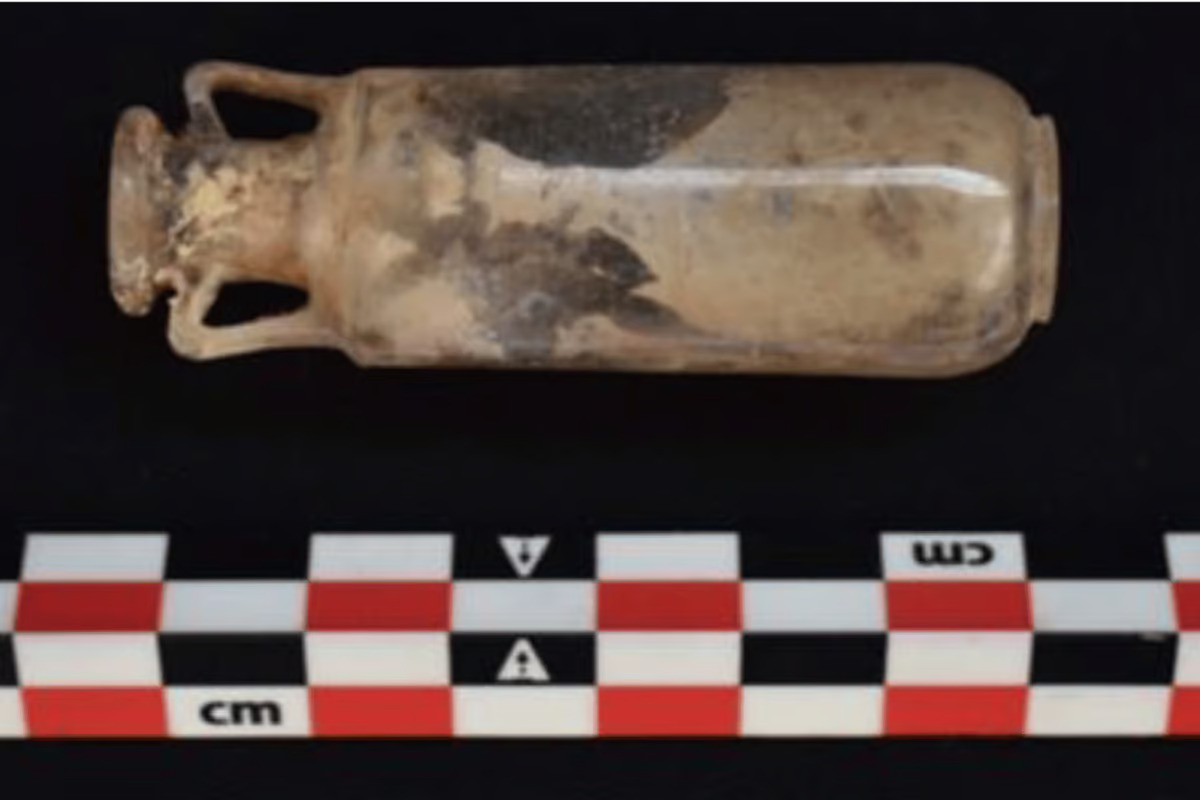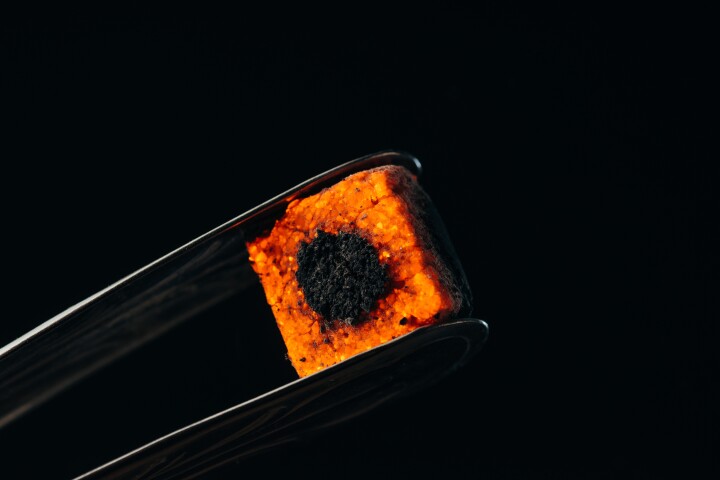 The crystal container holding the ointment had an amphora shape. University of Córdoba
The crystal container holding the ointment had an amphora shape. University of Córdoba
–
In 2019, during the construction of a house in Carmona, España [Spain], a mausoleum from ancient Rome was found. Archeologists were given access to the site, and one of the things they found was a cloth bag containing three beads of amber and an amphora-shaped jar made from hyaline quartz. The jar, known as an unguentarium, was still sealed with bitumen and a stopper made from a type of limestone known as dolomite. The sealing method went a long way toward preserving traces of the flask’s contents, an ointment, which was examined by researchers from the University of Córdoba who just released the results of their study.
Although the ointment no longer had a scent, the scientists used techniques including gas chromatography, mass spectrometry, X-ray diffusion and more to tease apart the substance’s composition and determine what type of smell it would have given off when it was made. Their conclusion was that the ointment consisted of a vegetable oil base infused with patchouli derived from the Pogostemon cablin plant, which has its origins in India.
Until this study, the use of patchouli in ancient Rome was unknown. Equally unknown was the use of a dolomite stopper and bitumen to seal it in place, making it waterproof and acting as an excellent preservative.
While patchouli is often found in New Age stores relatively inexpensively these days, the researchers think that the ancient ointment likely belonged to a pretty well-off family. That’s because most perfumes were stored in blown glass vessels in ancient Rome. The time and skill it took to carve a rare vial out of crystal, say the researchers, probably indicates that the inhabitants of the tomb were wealthy.
“In Roman times, quartz vessels were very rare luxury objects, several of which have been found near Carmona,” write the researchers. “The unguentarium was thus a rather unusual finding for an archaeological site, and even more unusual is that it was tightly stopped and contained a solid mass. This provided a unique opportunity to establish the chemical composition of the substances once held in the unguentarium – most probably, a high-quality perfume or cosmetic judging by the nature of the vessel.”
In addition to the ointment, the researchers also found urns holding the ashes of three adult women and three adult men in the tomb, along with objects that would have been used in funeral ceremonies including offerings and trousseaus. The crystal flask with the ointment was found inside a glass urn holding the remains of a woman aged between 30 and 40 years old.
“To our knowledge, this may be the first time a perfume from Roman times has been identified, which is a major advance in this field,” write the researchers in a paper that has been published in the journal, Heritage.
Source: University of Córdoba via Phys.org
–
























